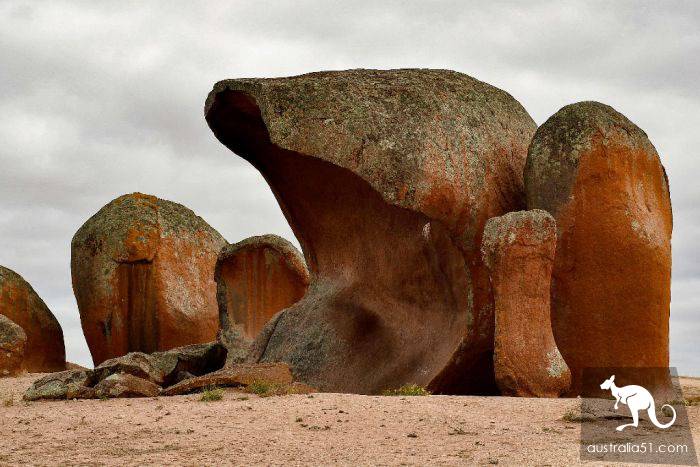
Murphy Hay pile is an example of rock structure in Island Mountain.
Murphy hay pile (Murphy's Haystacks) is located on (Eyre Peninsula), South Australia`s Al Peninsula, from Lincoln Port (Port Lincoln) all the way to Seduna (Ceduna),. You can easily miss them.
Key points:
- The hard granite structure, known as Dao Shan, has a similar composition to Urumu (Uluru) and wave rock (Wave Rock).
- This unique shape is thought to be 1.6 billion years old, but the rock itself has a history of 3 billion years
- Murphy`s Haystacks) has been on the same family land since the beginning of the 20th century
If you do, you will miss the opportunity to see some of Australia`s oldest rocks, which scholars say are disappearing.
Murphy's Haystacks is a group of windward rocks standing on the top of a private property about 40 kilometers south of (Streaky Bay) in Stryggie Bay.
The unusual name of the rock group came from a Scottish agricultural expert who strongly advocated raking soil to produce hay, a sign on the spot said.
When he saw the rocks in the distance, he told his companions that they were haystack, and that the owner of the land must have raked the earth.
At that time, the owner of the land was Dennis Murphy (Denis Murphy), Murphy Hay pile.
This is an island mountain.
Associate Professor Viktor Gostin (Victor Gostin), a visiting researcher at the University of Adelaide, says Murphy Hay pile is an island mountain.
Other Australian island mountains include Uluru in the Northern Territory and wavy Rock in Western Australia.
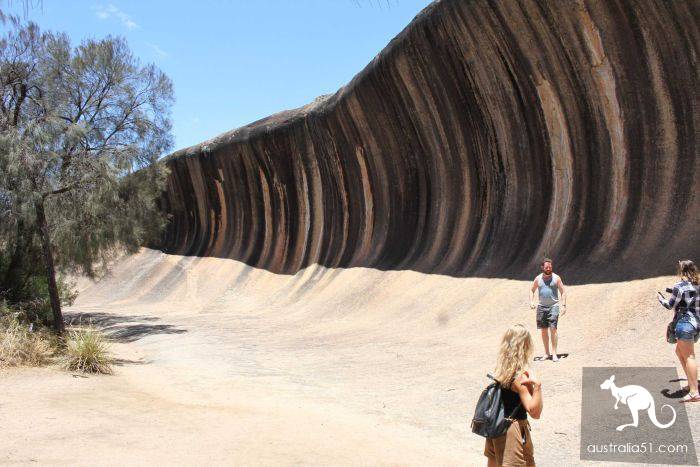
The wave rock in Western Australia is a famous tourist attraction (Flickr: Stu Rapley)
He said the hard granite was left after the softer material was rotten and weathered.
"this is the part that forms the haystack."
"the surrounding part has been weathered into clay and corroded, leaving only the hard part in the middle."
Millions of years of vicissitudes of life
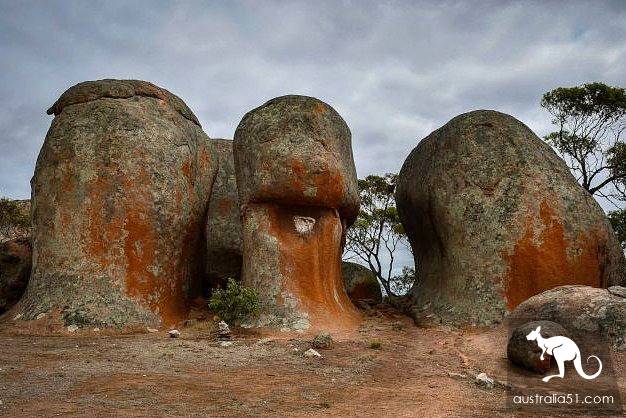
Murphy Hay pile has a history of more than a billion years. (ABC News: Gary-Jon Lysaght)
Dr. Gostin says Murphy Hay pile is one of the oldest rocks in Australia.
"they have a history of 1.6 billion years, which is about the average age of the younger part of Al Peninsula," he said.
"anywhere east of Al Peninsula is much younger; Al Peninsula is an ancient place in South Australia."
But he says the rocks have only taken shape for 1.6 billion years because they are believed to be 3 billion years old.
"in fact, the granite itself is very old, but the haystack is now formed closer, so you may track back to the dinosaur age and the surface weathered."
Gradually eroded.

Murphy Hay pile is granite and one of the younger rock structures in Al Peninsula. (ABC News: Gary-Jon Lysaght)
The Murphy haystack is being weathered and may disappear a billion years later, Dr. Gostin said.
"this is a different kind of weathering, and the rest is a hard part because they have not yet been invaded by weathering, or they have been hardened," he said.
"in other words, they have hardened through the extra process of bonding granite together with silica, and formed a hard shell."
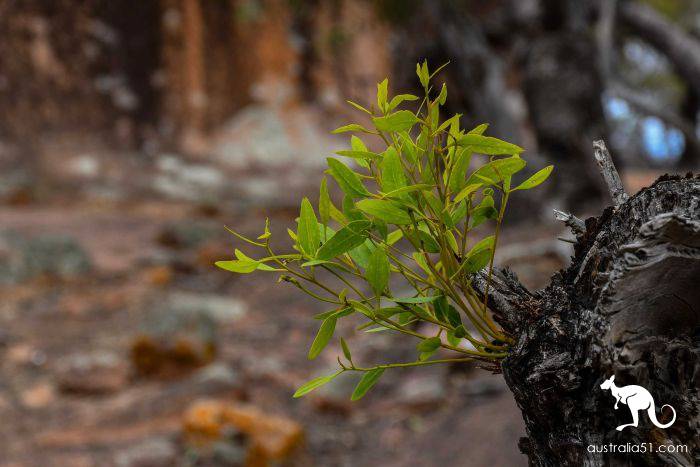
Small trees grow between the cracks in the rock structure of Murphy hay pile. (ABC News: Gary-Jon Lysaght)
Eric Bestland (Erick Bestland), an associate professor at Flinders University, says haystack is the slowest erosion of rock structures.
"this could be a combination of climate and surface flatness."
Dr. Bestrand said there was "low-intensity" rainfall on the Al Peninsula, so the rocks were not eroded by heavy rainfall.
He added that "tectonic inactivity" in the area means that the area is not affected by tectonic plate movement.
"it`s very stable here, and there are no earthquakes that can move the rocks up or down," he said.
"there are many different places in the world where you can look at these characteristics."
A family matter.
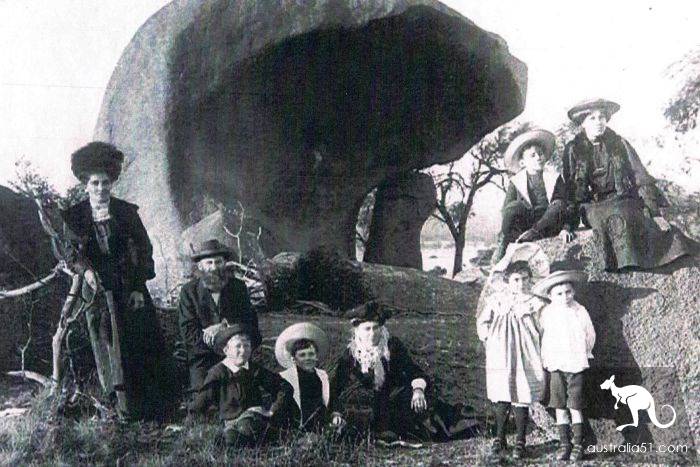
Dennis Murphy, left 2, 1905 at Murphy Hay pile with relatives and friends. (Supplied: Denis Cash)
Murphy haystack has been owned by the same family since the beginning of the 20 th century.
Dennis Cash (Denis Cash), the grandson of Mr. Murphy and current owner of the land, plays an important role in opening up Island Hill as a tourist destination.
"my first reaction was,`No, I don`t want to open them `because of the risk of fire, garbage and graffiti," Mr. Cash explained.
But he said allowing the public to enter the rock group was "one of the greatest things" his family had ever done.
"there are a lot of requests from the public for better access."
"before we open them, people walk through the paddock to the rocks."
``It`s great to be able to share what we have with the world. ``


